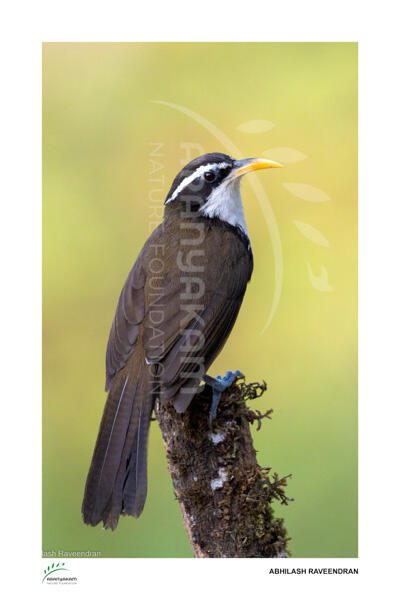
The Indian Scimitar Babbler (Pomatorhinus horsfieldii) is a small bird species belonging to the Timaliidae family. This species is primarily found in the Indian subcontinent. This bird species has a unique and striking appearance with its scimitar-shaped bill, adapted to help the birds forage through thick underbrush for insects and other small prey.
Appearance and Physical Characteristics
The Indian Scimitar Babbler is a small-sized bird that typically measures about 18 cm (7 inches) in length, with a wingspan of around 26 cm (10 inches). The bird weighs approximately 50 grams (1.7 ounces). Its plumage is mostly a rich, warm brown color with streaks of black on its crown, back, and wings. It has a broad, black stripe running from its bill to its eye, and a distinctive scimitar-shaped bill that is curved downwards. The bird’s legs and feet are pale pinkish-grey, and its eyes are reddish-brown.
Habitat and Distribution
The Indian Scimitar Babbler is primarily found in the Indian subcontinent. It prefers to inhabit dense forests, bamboo thickets, and other wooded areas with thick underbrush, where it forages on the forest floor for insects, spiders, and small invertebrates.
Behaviour and Ecology
The Indian Scimitar Babbler is a highly social bird that usually travels in small flocks of up to six individuals. These flocks are very vocal and can often be heard making a range of calls and songs, including high-pitched, trilling sounds and low, guttural growls. They are primarily active during the day, foraging on the ground, and in low shrubs and bushes for food.
The scimitar-shaped bill of the Indian Scimitar Babbler is highly specialized, allowing the bird to probe deep into the underbrush and crevices to find insects and small prey. They are known to feed on a variety of invertebrates, including beetles, ants, termites, and spiders.
Breeding and Reproduction
The breeding season of the Indian Scimitar Babbler is from April to June. They build their nests in the underbrush and thickets, constructing them from twigs, leaves, and grass. The nests are typically cup-shaped and are lined with softer materials such as feathers, moss, and hair. The female lays around 3 to 4 eggs, which are incubated for around 14 to 15 days. The chicks are born naked and blind, and both parents take turns feeding and caring for the young. The chicks fledge after approximately 15 to 17 days.
Conservation Status
The Indian Scimitar Babbler is classified as Least Concern (LC) by the International Union for Conservation of Nature (IUCN). Despite this, their populations have experienced some declines due to habitat loss and fragmentation. This species is known to occur in several protected areas throughout its range, including national parks and wildlife sanctuaries, which provide some measure of protection.
